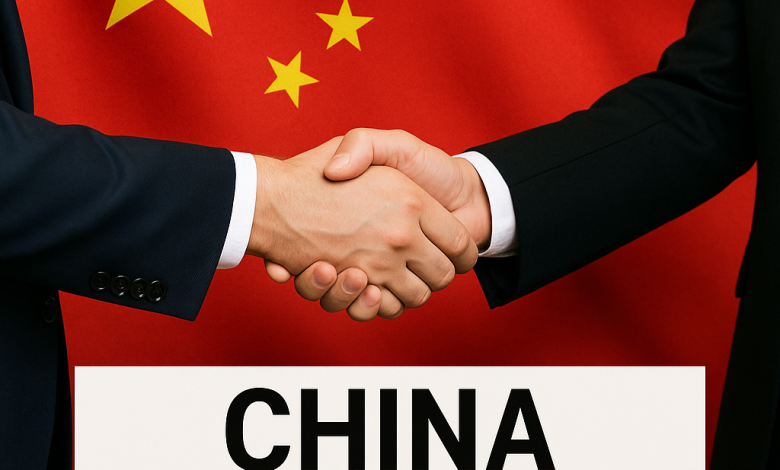All You Need To Know About China Trade Deal

The 2025 U.S.-China trade deal, announced on May 11, 2025, marks a significant step toward de-escalating the trade war between the world’s two largest economies. After two days of intensive negotiations in Geneva, Switzerland, U.S. Treasury Secretary Scott Bessent and Trade Representative Jamieson Greer confirmed a breakthrough agreement aimed at reducing the $1.2 trillion U.S. global trade deficit, including the $295 billion bilateral deficit with China. While full details were slated for release on May 12, the deal’s framework suggests a potential thaw in relations after months of escalating tariffs and economic tensions.
Background: Escalating Tariffs and Trade War
The 2025 deal follows years of strained trade relations under the Trump administration’s second term, which saw tariffs reach historic highs:
- U.S. tariffs on Chinese goods: 145%, imposed in April 2025 as part of Trump’s “Liberation Day” policies.
- China’s retaliatory tariffs: 125% on U.S. exports.
- Previous measures: A 20% U.S. tariff in February 2025 (linked to the fentanyl crisis) and a 34% “reciprocal” duty in April.
These tariffs brought $600 billion in bilateral trade to a near standstill, with U.S. imports from China plunging 60% and Chinese exports to the U.S. dropping 21% year-over-year in April 2025. The economic fallout included:
- U.S. GDP contraction in Q1 2025, the first since 2022.
- Chinese factory activity contracting at a 16-month pace.
- Inflation fears, with Goldman Sachs predicting a 4% rise in U.S. consumer prices.
Key Components of the 2025 Deal
While specifics remain undisclosed until the May 12 announcement, officials highlighted the following elements:
1. Reduction of Trade Deficit
The deal explicitly targets the U.S. trade deficit with China, which Trump declared a “national emergency” in April 2025. Beijing agreed to measures likely involving increased purchases of U.S. goods (e.g., agriculture, energy) and structural reforms to address U.S. complaints about China’s “mercantilist” economic model.
2. Tariff De-Escalation
Though not confirmed, Trump hinted at lowering U.S. tariffs to 80% (from 145%) if China made concessions. Analysts note that even a 50% tariff threshold is critical for restoring trade flows.
3. Non-Tariff Issues
The deal may address:
- Fentanyl crisis: Earlier tariffs were tied to China’s role in opioid precursor chemicals.
- Intellectual property (IP) theft and forced technology transfers.
- Market access: Trump demanded China “open up” to U.S. businesses.
4. Implementation and Enforcement
The agreement includes mechanisms to ensure compliance, a recurring issue in past deals (e.g., the 2020 Phase One deal). Greer emphasized the “groundwork” done before Geneva to expedite terms.
Reactions and Implications
U.S. Perspective
- Trump hailed “GREAT PROGRESS” and a “total reset” in relations.
- Commerce Secretary Howard Lutnick framed the talks as a “de-escalation” from “trade embargo” levels.
- Skepticism: Critics noted the lack of immediate tariff cuts and called the deal “desperation” for a political win.
Chinese Perspective
- State media (Xinhua) cautiously welcomed the talks but urged “strategic patience”.
- No public comment from Beijing post-announcement, suggesting internal divisions.
Global Impact
- Supply chains: A partial tariff rollback could revive stalled shipments, though Flexport warns of lingering disruptions.
- Inflation: Lower tariffs may ease price pressures, but effects will lag due to existing shipments.
- Geopolitics: The deal could stabilize relations amid parallel crises (e.g., Taiwan, Ukraine).
Challenges and Unresolved Issues
- Tariff Specifics: Will the U.S. commit to 80%, or will China demand deeper cuts?
- Enforcement: Past deals (e.g., 2020) collapsed due to non-compliance.
- Domestic Pushback: U.S. labor groups and China’s state-owned enterprises may resist concessions.
- Transshipment: China’s 8.1% export surge to Southeast Asia in April suggests tariff evasion may persist.
Conclusion: A Fragile Truce
The 2025 deal represents a tactical pause rather than a long-term resolution. Its success hinges on:
- May 12 details: Clarity on tariff timelines and Chinese commitments.
- Political will: Trump’s July 8 deadline for “Liberation Day” rates looms.
- Global economic stability: Both nations face recession risks, incentivizing compromise.
While the agreement signals a rare moment of cooperation, the underlying tensions—over technology, security, and hegemony—ensure the U.S.-China trade war remains far from over.

